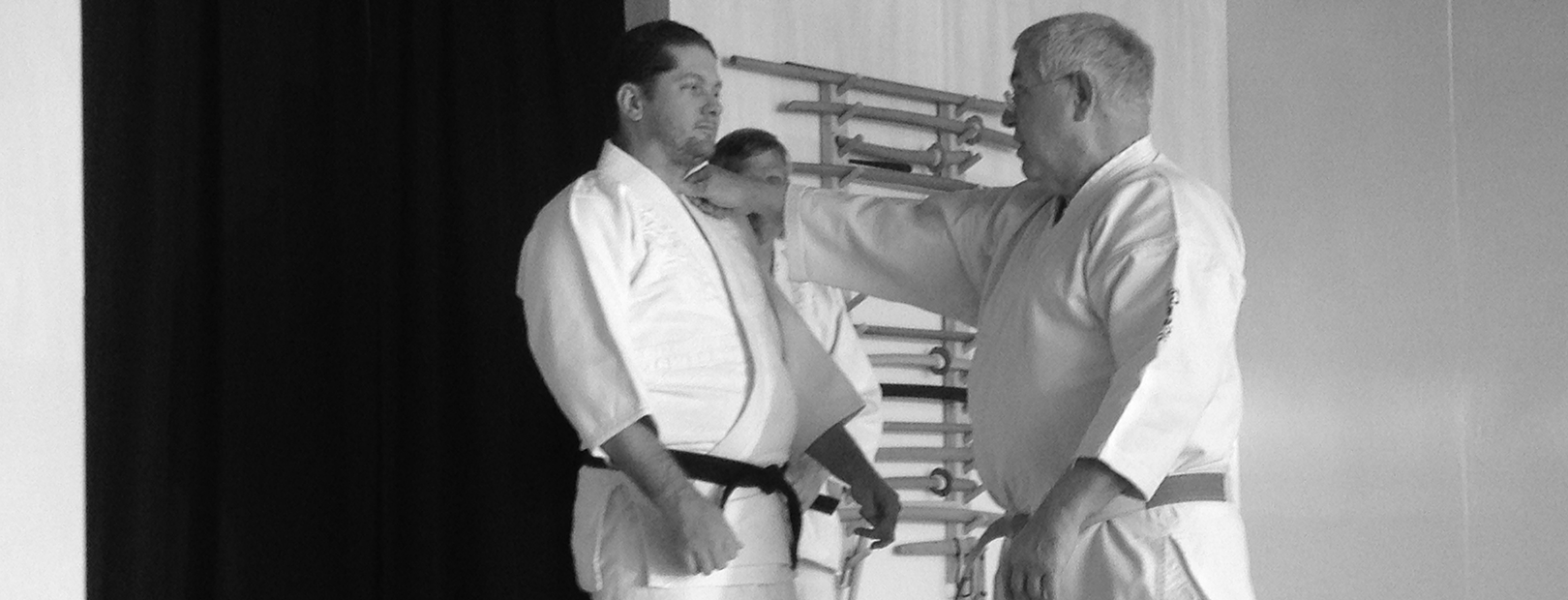In the dojo, we use certain common Japanese phrases all the time at the beginning and end of class and before and after training with each other. Here is an introduction to some of the Japanese terms you might hear as you learn our art.
- 神前に礼 shinzen ni rei — bow to the front of the dojo
- 正面に礼 shomen ni rei — (same as above)
- お互いに礼 otagai ni rei — bow to each other
- お願いします onegai shimasu — I have a favor to ask of you (i.e. “let’s train together”)
- ありがとうございました arigatō gozaimashita — thank you (for what you have done)
You may also hear the following words used to signal the beginning or end of something:
- はじめ hajime — begin
- やめ yame — stop
You will also learn other terms related to your practice. Don’t worry if they don’t make sense yet; your seniors will explain them to you in increasing depth as you progress:
- 受身 ukemi – [literally “receiving body”] falling and rolling practice
- 遠い間合い tōi ma’ai – far distance
- 近間合い chika ma’ai – close distance
- 内間合い uchi ma’ai – inside distance
- 残心 zanshin – remaining spirit
- 遠山の目付け enzan no metsuke – gazing at distant mountains
There are a few items of clothing as well:
- 稽古着 keikogi – training uniform
- 上着 uwagi – upper garment
- ズボン zubon – pants
- 帯 obi – belt
- 袴 hakama – Japanese pleated skirt-like pants
There are many more Japanese terms that you will encounter during your training. Rather than list all of them here, you will learn many of them as you train. Don’t worry… you don’t have to be (or become) fluent in Japanese in order to learn Aikibudo.
If you are interested in a much more in depth treatise on the subject of Japanese for martial artists, our own Michael Hacker sensei—a professionally-trained linguist and polyglot with 10 years of experience living and training in Japan—has written an extensive book on the subject which can be found at: thelanguageofaikido.com.

